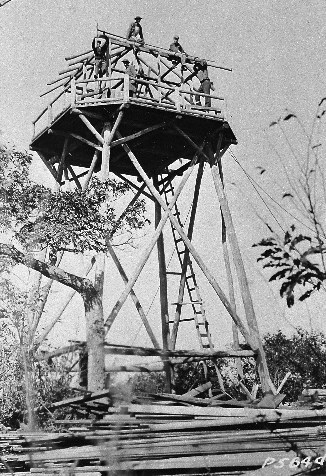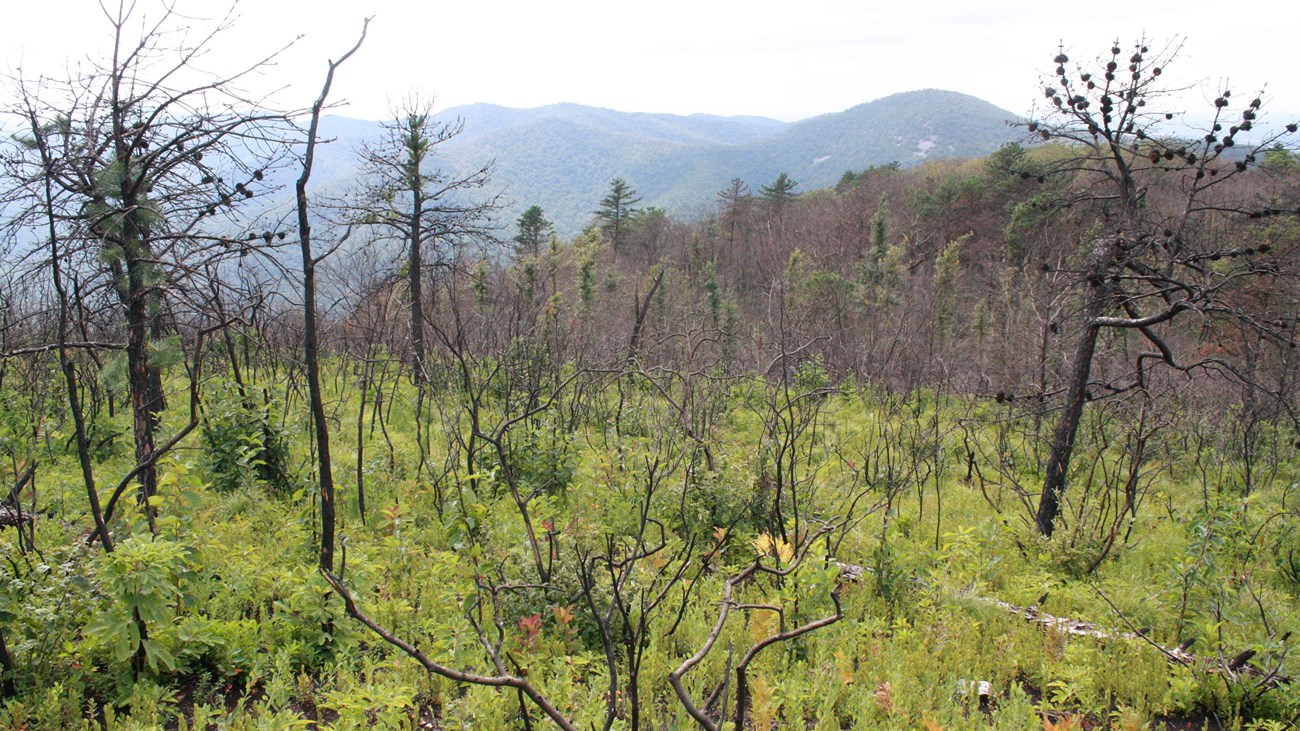|
In Virginia, most wildfires are the result of human actions and can be prevented by using common sense, following fire safety rules, and obeying fire laws. With the number of people moving and building homes in woodland areas increasing, more people are closer than ever to potential fires. Wildfire season in Shenandoah is February, March, April, and May—most wildfires occur during these months. A second fire season occurs in October, November and December. Always keep in mind that wildfires are a concern in any period when conditions are dry and conducive to fire growth and spread.

NPS Archives Why do we manage fires?One of the first duties of the Civilian Conservation Corps when they arrived in the Blue Ridge Mountains in 1933 was fire suppression. They built fire towers and manned them around the clock, scanning the horizon for any hint of smoke. Fire crews attacked whenever fire was detected and stopped the destruction as quickly as possible. Meanwhile, the residents living on the land that would become the park were intent on their annual burning of the blueberry bushes and meadows where their cattle grazed. For these residents, fire helped plants regenerate and kept unwanted plants from taking over grazing land. Both the CCC and the residents were doing the right thing. Balancing the needs of the environment with the safety of people and places near areas prone to fire is one of the great challenges in land management today. Fire professionals at Shenandoah use fire as an effective tool to help restore and maintain natural and cultural landscaping. Knowing that unwanted fires caused by lightning or people are inevitable, Fire professionals at Shenandoah also plan for and prevent conditions under which fires can threaten public safety, devastate property, or damage natural and cultural resources. Prescribed FireA prescribed burn follows a carefully designed plan that fire management specialists have spent months and sometimes years developing. Careful consideration is given to the size of the area to be burned, the type of vegetation present in the area, the amount of personnel and type of equipment needed to manage smoke and fire behavior, and the weather and wind conditions needed in order to conduct the burn safely. If any of these conditions are not within the prescription, the burn will be postponed until a later date. The professionals who carry out the prescribed burn have extensive training in how to protect surrounding communities, themselves, and park resources. Fire BehaviorFire science carefully studies the patterns and behavior of fire so that firefighters are prepared for changing circumstances. When planning for a prescribed burn, fire management specialists consider many factors that could influence a fire's behavior.Weather reports and wind patterns can affect fire. Humidity levels impact the capacity for burning: too high, and the fuel will not ignite; too low, and the vegetation could be dangerously dry. Wind direction affects the movement of the fire and its smoke. Fire professionals inspect property maps to identify neighboring communities that may be affected by the smoke drift. Fire professionals also examine topographical maps and consult with resource specialists so that they understand the terrain and the type of vegetation present in the area. Terrain with steep slopes could have air currents that create a chimney effect and make the fire burn hotter and faster, and the slopes would be difficult for firefighters to work. Fast-burning or extremely dry vegetation can also present dangerous fire conditions. By understanding all the factors that affect wildland fire, firefighting professionals can plan prescribed burns that effectively manage the targeted natural area and keep all members of the community, including neighbors, visitors, and staff, safe. 
Fire Ecology
Fire has a role to play in the ecosystem of Shenandoah National Park. |
Last updated: February 9, 2022
